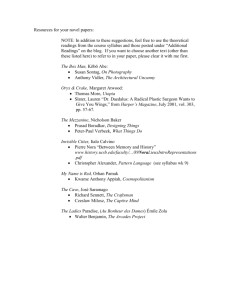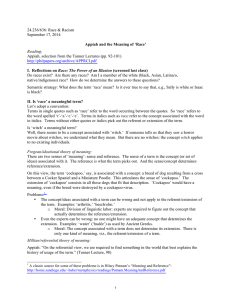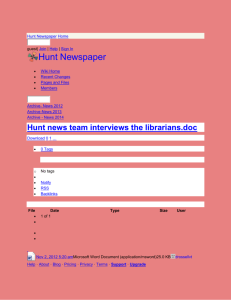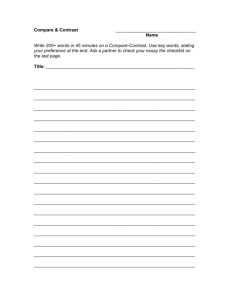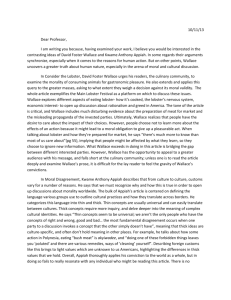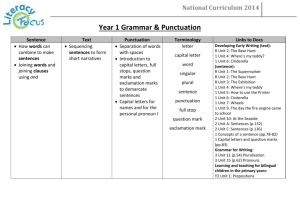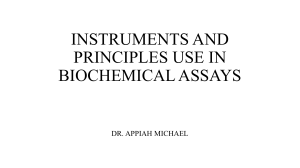November 4
advertisement
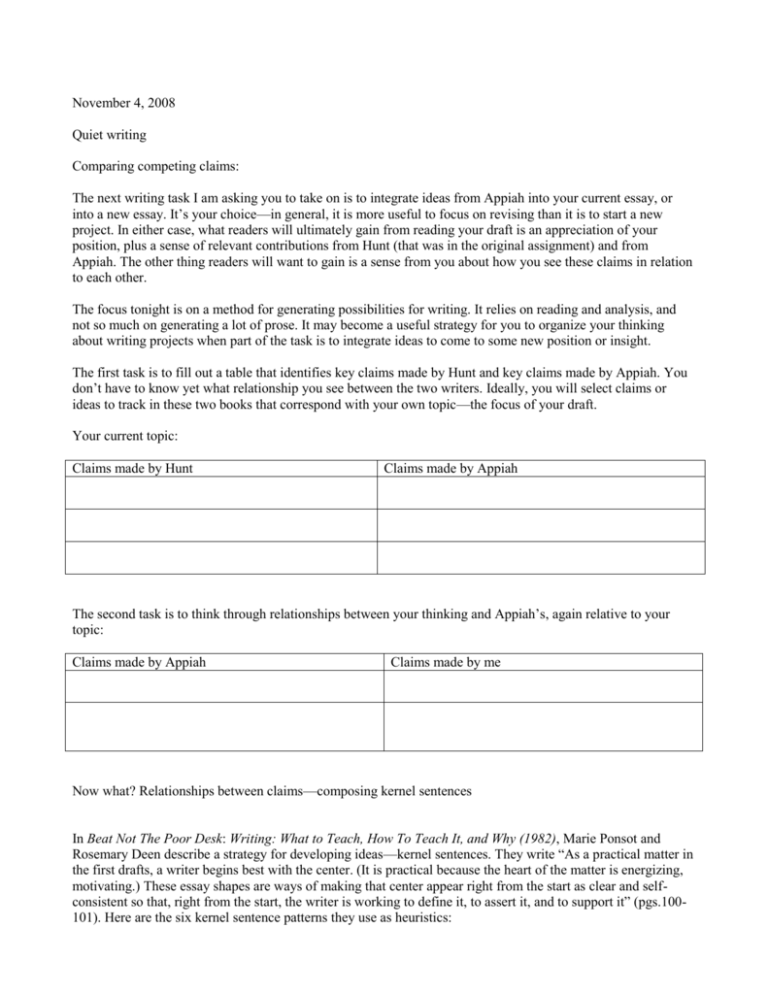
November 4, 2008 Quiet writing Comparing competing claims: The next writing task I am asking you to take on is to integrate ideas from Appiah into your current essay, or into a new essay. It’s your choice—in general, it is more useful to focus on revising than it is to start a new project. In either case, what readers will ultimately gain from reading your draft is an appreciation of your position, plus a sense of relevant contributions from Hunt (that was in the original assignment) and from Appiah. The other thing readers will want to gain is a sense from you about how you see these claims in relation to each other. The focus tonight is on a method for generating possibilities for writing. It relies on reading and analysis, and not so much on generating a lot of prose. It may become a useful strategy for you to organize your thinking about writing projects when part of the task is to integrate ideas to come to some new position or insight. The first task is to fill out a table that identifies key claims made by Hunt and key claims made by Appiah. You don’t have to know yet what relationship you see between the two writers. Ideally, you will select claims or ideas to track in these two books that correspond with your own topic—the focus of your draft. Your current topic: Claims made by Hunt Claims made by Appiah The second task is to think through relationships between your thinking and Appiah’s, again relative to your topic: Claims made by Appiah Claims made by me Now what? Relationships between claims—composing kernel sentences In Beat Not The Poor Desk: Writing: What to Teach, How To Teach It, and Why (1982), Marie Ponsot and Rosemary Deen describe a strategy for developing ideas—kernel sentences. They write “As a practical matter in the first drafts, a writer begins best with the center. (It is practical because the heart of the matter is energizing, motivating.) These essay shapes are ways of making that center appear right from the start as clear and selfconsistent so that, right from the start, the writer is working to define it, to assert it, and to support it” (pgs.100101). Here are the six kernel sentence patterns they use as heuristics: 1. Once/Now: Once I (thought something), and now I (think something): working with simple parallel construction, juxtaposition, comparison/contrast This is a useful way to describe how your thinking has evolved or been influenced by something you have read or heard: the once part is prior to reading, and the now is you working with more information 2. Opposing Voices: One writer/one other person argues (whatever), but I think (whatever): making an argument, correcting a misapprehension This is a useful way to introduce a simple argument—Hunt argues this, but I think that. The risk is that it is simple, and could tempt you to become reductive in your thinking, as in Hunt is totally wrong, and I am totally right. If you work with this construction, assume your reader is strong enough to take in two opposing views, and to consider the merits of what you are saying. 3. Two Voices: One writer argues that (this), but this other writer suggests that (whatever): making a distinction between two views or approaches that both have validity You could use this construction to introduce to perspectives on a topic, laying the ground for weighing in with your own point of view: Hunt argues that declarations are crucial in gaining rights, but Appiah stresses habit. I think… (and then you would develop all three views, to varying extents). 4. Hindsight: Previously (I understood the situation as being like this), but now with hindsight, (I appreciate that this is what is going on): This is similar to the once/now kind of construction, but in slightly more formal terms. It’s an easy way to incorporate evolutions in your thinking. For instance, “I might have argued initially that the CA PROP 8 referendum was essentially a referendum on a human rights issue; after considering Appiah’s argument, I also think it is a case of people needing more time to get used to the practice of an idea.” If I wrote that sentence, readers would expect me to explain both parts: my initial understanding, and the position I have come to hold. 5. Foresight: As I anticipate (this situation), I believe that (this approach will be more useful) instead of (another approach): choosing between approaches or paths based on your ability to define a situation, and identify two possible ways of approaching it. This would be another way to work with Hunt and Appiah, if you want to choose between them in terms of how to approach a contemporary issue. 6. Insight: In order to understand (this issue), I am going to rely on (this principle or concept): deliberately applying an idea or principle to a situation You can also use this version to organize your short paper, where you select an issue and then select an insight from Hunt or from Appiah to help you think it through. For this assignment, you would also explain why you are choosing to draw upon that idea. The third task: Focus on either table, or a combination of both, and choose a kernel sentence pattern that feels like one you can work with. Draft your initial sentence. We will review these sentences together, and talk about this method. For next week, revise these tables, and compose practice kernel sentences that map out relationships among these thinkers (you included.) Bring the tables and kernel sentences to class. In addition, bring your most current version of your draft. Turn in revised drafts & homework
